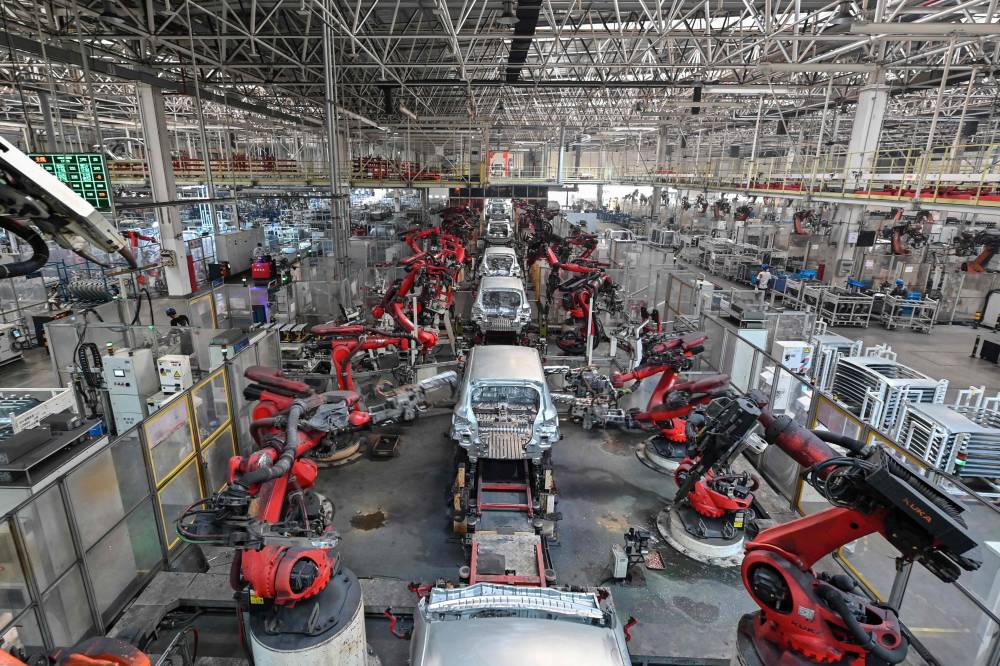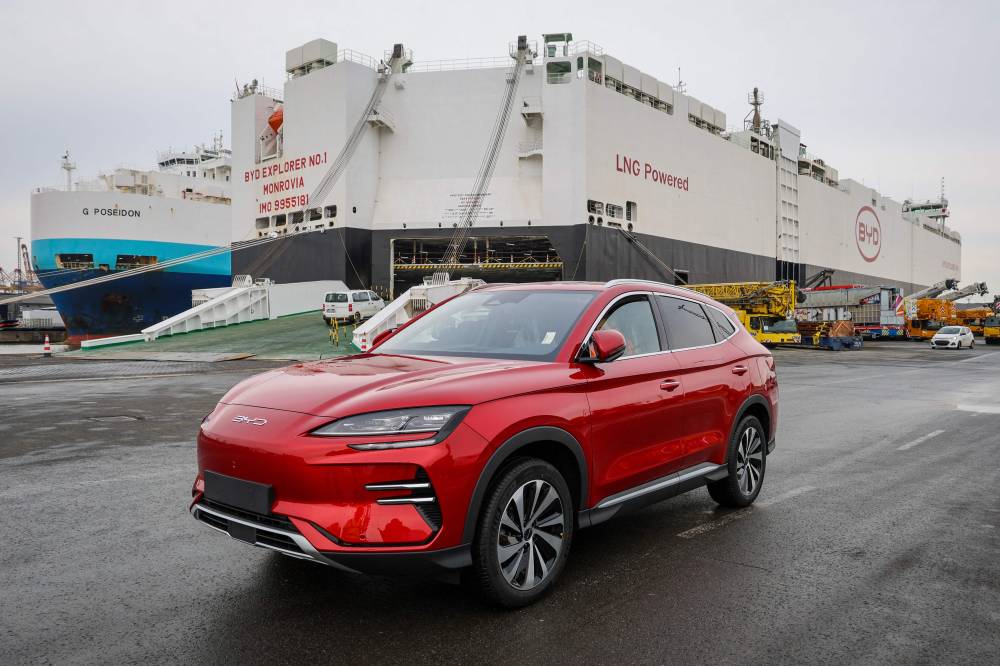As EU targets Chinese cars, European rivals sputter

PARIS — As the EU seeks to put a brake on competition from Chinese electric cars, European automakers are stuck in second gear.
German group Volkswagen, BMW, Mercedes and Stellantis, a 15-brand behemoth that includes Jeep, Fiat and Peugeot, have all issued profit warnings in recent weeks.
Weaker demand for their cars in China, whose economy is slowing, and growing competition from cheaper Chinese EVs elsewhere are among the main drags on European automakers, which employ 2.4 million people.
In a divided vote, EU states on Friday gave a definitive green light to hefty additional tariffs on made-in-China EVs.
The aim is to protect Europe’s auto industry, but opponents including the German government and the country’s top carmakers fear the move could backfire.
‘Grave danger’
The European auto industry is in “grave danger,” Luc Chatel, president of French auto industry trade group PFA, told the French Senate on Wednesday.
New car registrations rose by just 1.4 percent to 7.2 million units in the first eight months of the year, maintaining a low volume since the Covid pandemic broke out in 2020.
High prices at dealerships and a sluggish economy have discouraged consumers from getting new cars, according to analysts.
“The performance of the auto sector in the coming weeks and months will be capped by deteriorating fundamentals into 2025,” UBS analysts said in a note.

More worrying, sales for electric vehicles have stalled when the industry is facing a 2035 EU deadline to phase out new sales of petrol-powered cars.
EVs accounted for 12.6 percent of car sales in Europe in the first eight months of the year, down from 13.9 percent over the same period in 2023.
Worried about stricter emissions targets that come into effect next year, the European Automobile Manufacturers’ Association (ACEA) urged the EU last month to provide “urgent relief measures”.
VW shock
In a stark sign of the European industry’s struggles, Volkswagen announced last month that it could close factories in Germany for the first in its history as it grapples with high costs, Chinese competition and weak demand for EVs.
The German government held crisis talks with senior figures from the country’s beleaguered auto industry last month.
But Germany opposes EU tariffs against China, fearing that retaliatory measures could hurt automakers doing business in the world’s second biggest economy.
Ten countries including France voted Friday for imposing tariffs of up to 35.3 percent on top of existing 10-percent duties.
Germany was among five that voted against while 12 abstained, paving the way for the European Commission to impose the tariffs.

German Finance Minister Christian Lindner warned the commission against sparking a “trade war” as he called for a negotiated solution, while VW and BMW made similar pleas.
Sales struggles
Chinese competition is not the only problem for some companies.
“After two years of double-digit margins, European automakers are now seeing that when it rains, it rains cats and dogs,” said Kevin Thozet, portfolio manager at asset manager Carmignac.
After posting a series of record quarterly earnings, Stellantis slashed its operating profit margin forecast on Monday from “double-digit” expectations to somewhere between 5.5 percent and seven percent.
Stellantis has struggled in North America, its cash cow in the past, as US dealerships are having a hard time unloading their inventory of expensive cars.
The company has offered promotional deals in recent months, limiting profit margin.
The weaker performance has trickled down to suppliers such as airbag-maker Autoliv and parts producer Forvia, which have also lowered their earnings outlooks.
“We’ve had bad news. We don’t see, by the end of this year, how the market could recover,” said Forvia chief executive Patrick Koller.
“We thought that combustion engines would compensate for the drop in electric motorization, but that didn’t happen,” he said.
AFP is one of the world's three major news agencies, and the only European one. Its mission is to provide rapid, comprehensive, impartial and verified coverage of the news and issues that shape our daily lives.





















